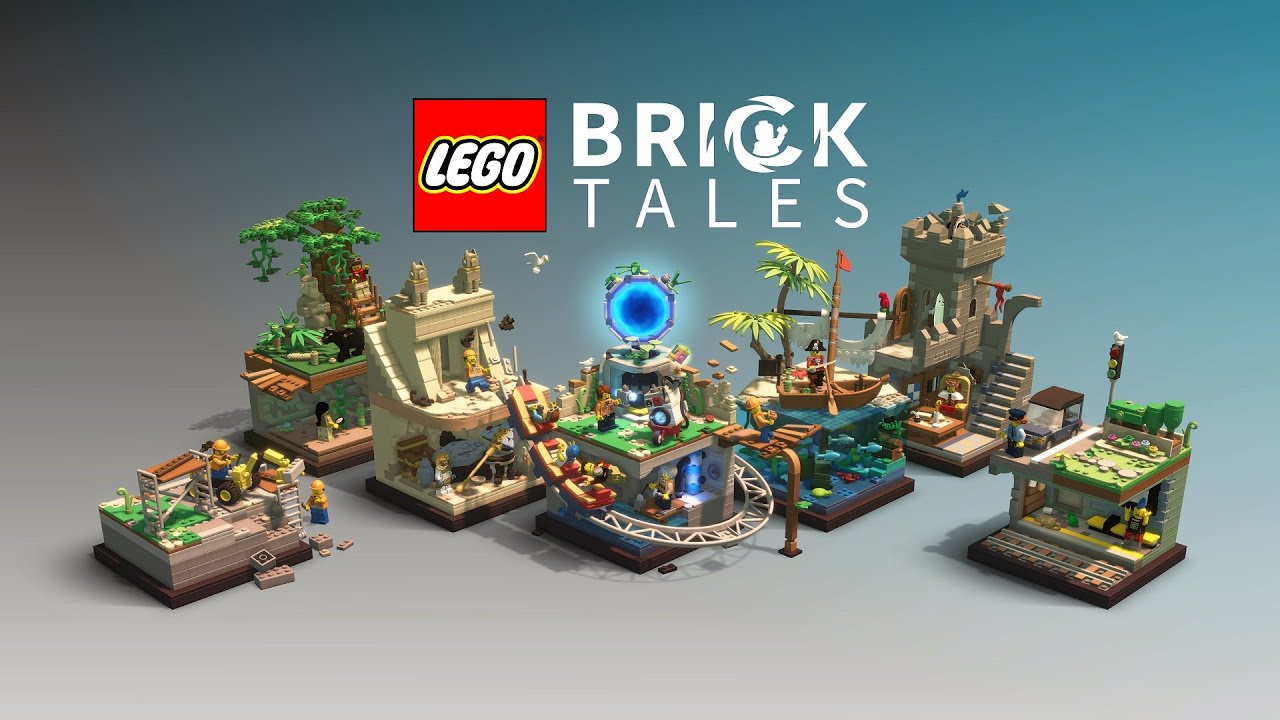The best thing about LEGO Bricktales is how it’s not another childish reinterpretation of a movie franchise. Instead of playing as a Minifigure hoovering up LEGO studs you’re a Minifigure that builds with LEGO! This is an original IP that shares more of its DNA with The Lego Movie than it does with the games you’re familiar with, and the opportunity to play with LEGO bricks in a virtual world is something LEGO fans have been anticipating for a long time. It’s a welcome change to a franchise that has become quite stagnant of late. That’s not to say those other LEGO games aren’t great but LEGO Bricktales has a fresh new spin on the popular toy range that everyone should experience.
In LEGO Bricktales, your adventure starts when Grandpa asks you to visit him in his laboratory, which is located under an old theme park that has certainly seen better days. Grandpa has caused a power cut and can’t get down from the top floor without electricity. With the aid of a robot called Rusty and a handful of tutorials to get you comfortable with the brick-by-brick building system, you restore the power and rescue Grandpa. Grandpa informs you that Mayor Rufina burdened him with restoring the theme park but he got distracted building portals. Not to worry though, as Rusty has a plan: you and Rusty will use the portals to travel through space and time, accumulating Happy Crystals to power one of Grandpa’s inventions which can conveniently rebuild the theme park!
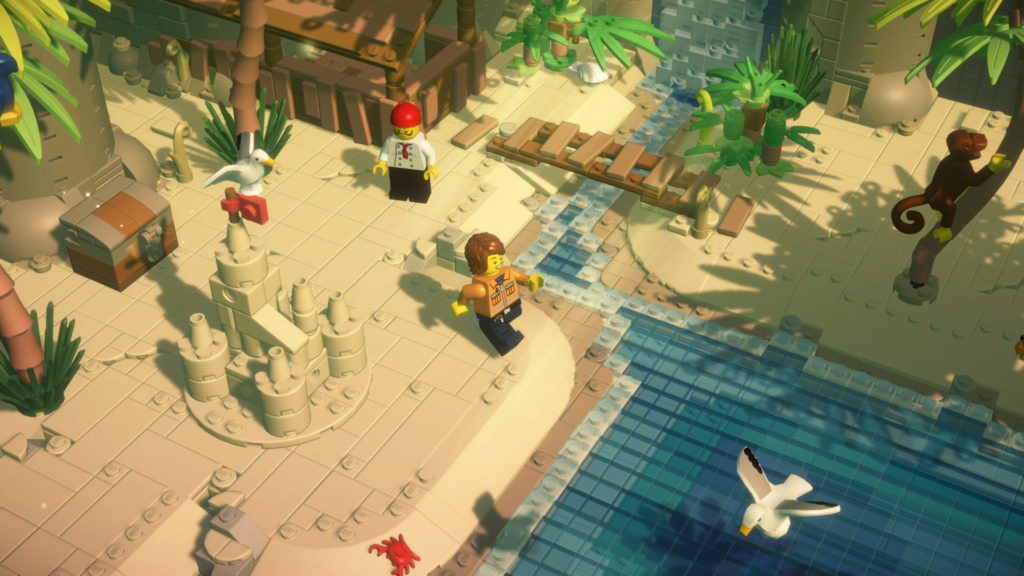
With the tutorial level and the expository dangling carrot out of the way, LEGO Bricktales is a puzzle adventure set on 6 beautifully-crafted LEGO dioramas. The amount of detail that has been poured into the biomes is outstanding, and they’re so authentic that it wouldn’t be impossible to rebuild them in your own home. Pausing the game lets you rotate the dioramas, which is extremely useful when hunting for secret areas and collectables. It’s inside these plastic biomes where you will find a vast variety of incompetent characters that will require you to build things for them. Expect to stumble into a pilot who can’t fly a plane, a mechanic who refuses to repair a car, a parrot translator that can’t talk to parrots, and a farmer who can’t keep their chickens cooped.
Once you’re ready to build, you’re thrown into a brick-building simulator. To make things less overwhelming, each task has restrictions on the types of bricks you can use, and where you can place them. The size and shape of the building spaces (as well as the bricks available) are usually a hint of what you need to make. Building challenges come in a few flavours: practical, physics-based or decorative. All building challenges feature all three types but there’s often a greater emphasis on at least one of them per challenge.
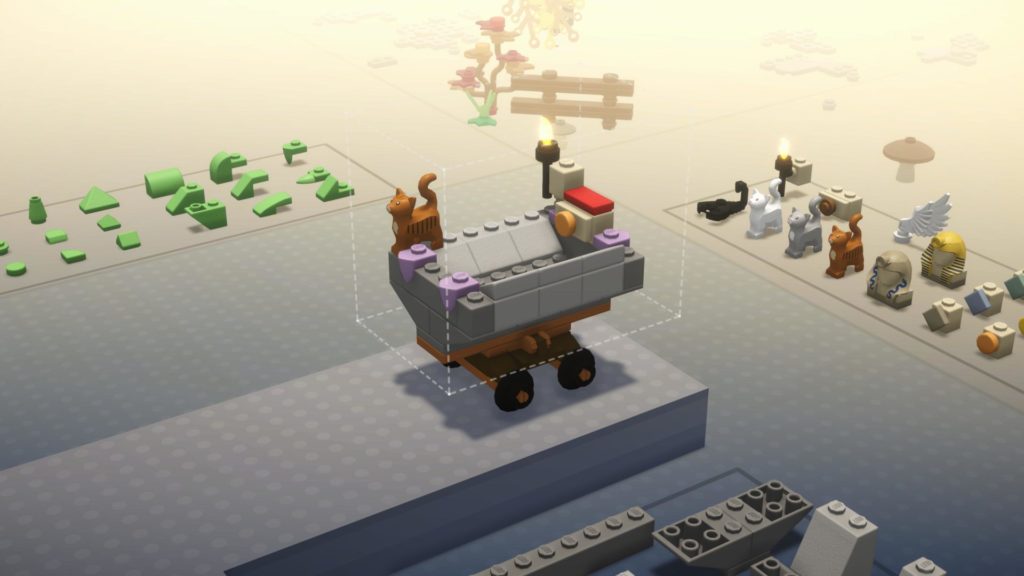
Practical challenges focus on building bridges or connecting different levelled platforms together. Arguably, these are some of the least interesting. As you’re only trying to get from point A to point B you will find yourself doing the bare minimum just to carry on with the game.
Physics-based challenges are by far the most difficult, and that also means they’re the most interesting. Some of these ones will definitely be too hard for younger players to figure out by themselves. They are time-consuming and require patience but they’re also very rewarding once you’ve completed them.
Decorative challenges are much more relaxing and it’s easy to get lost in creating something you’re truly satisfied with. These challenges are different from the others as they don’t have a function in the dioramas besides looking as cool as you want them to.
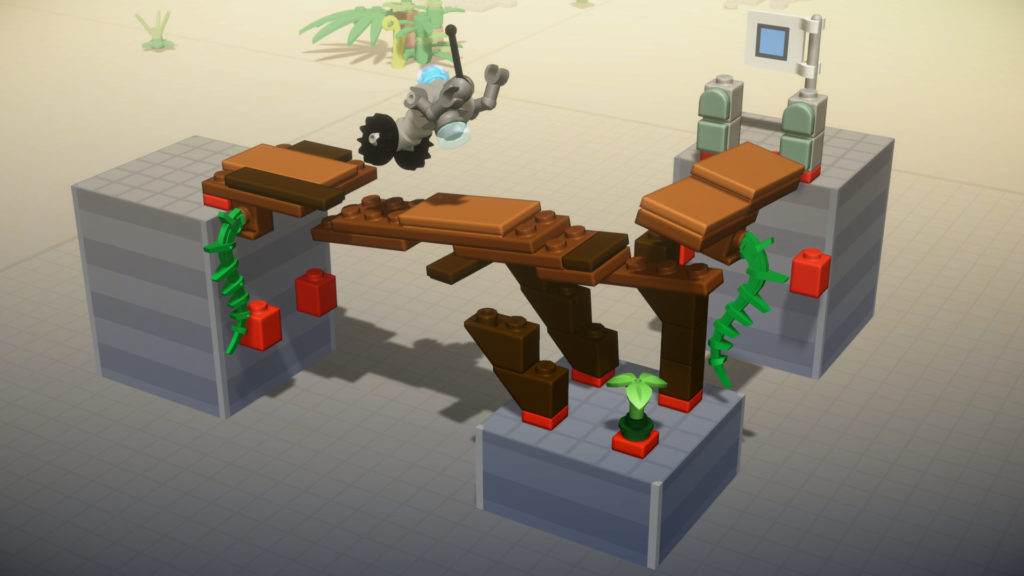
When you’re not building, you’re exploring. Every world has hidden treasure chests and finding them will reward you with currency that can be spent in Boo’s shop, unlocking new outfits or new colours and themed bricks to play with in the Sandbox mode. Each biome has 20 animals to collect too, and even though finding them is an optional sidequest you will undoubtedly get the compulsion to catch ’em all.
Finding all the treasure chests and animals require unlocking all of Rusty’s skills, which is achieved during the story campaign. You see, when Granpa built Rusty he sent it into space where it was picked up by aliens. These aliens upgraded Rusty with futuristic functions that need to be activated by collecting alien LEGO pieces. These pieces are found in distinct dungeons that are very similar to an escape room, forcing you to master the new ability to work your way out. Unlocking all of Rusty’s skills gauruntees that you will revisit previous levels, as Rusty’s new powers let you reach previously undiscovered areas.
Once you’ve bought a few clothes from Boo you can customise your character from the Wardrobe, which is accessible in the pause menu. The first thing you’ll want to do is change the look of your character. The default Minifigure is Bob Ross with what looks like a blood stain on his apron. There’s something fulfilling about customising your own Minifigure and it’s a missed opportunity not to be able to design your own look from the get-go. All the hard work has already been done – the Wardrobe exists – and it should have been pushed front-and-centre to the very beginning of the game.
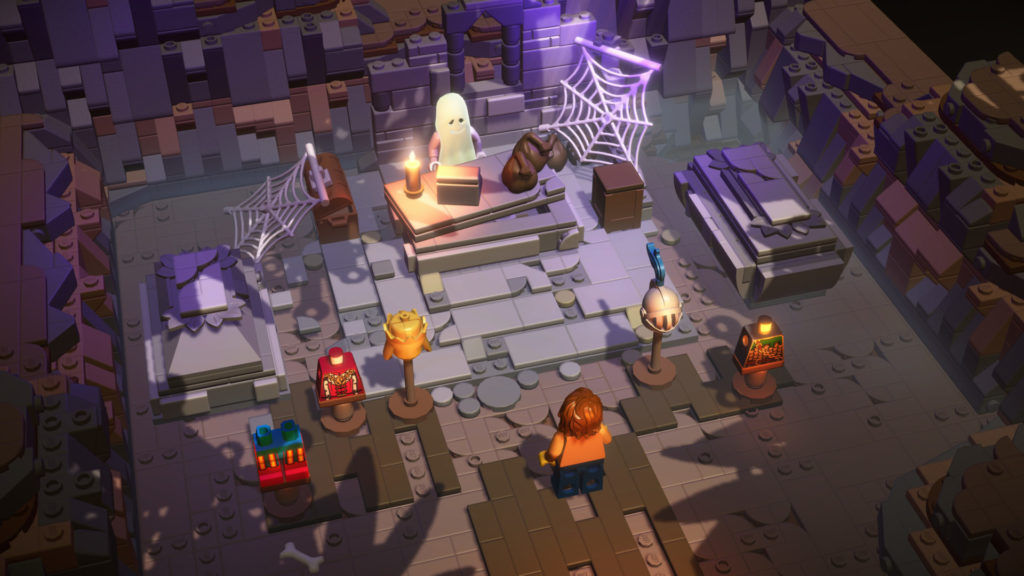
Another seemingly overlooked detail is the Sandbox mode. Early on Rusty introduces you to the Sandbox mode but as you have to unlock additional parts and colours throughout the game you will completely forget about it. Once all of the themes and colours are unlocked it’s worth returning to the Sandbox but by the time you have done that there’s very little incentive to be creative. The choice of LEGO bricks is also severely scarce, which can be perceived as a good thing – that’s to say, there’s loads of potential for expansion or even a fully-fledged LEGO building sim further down the road.
It’s also absolutely criminal how you can’t control the camera. At first, the way the camera swings the perspective around when you go around a corner is fascinating but it won’t take long for the shackles of automation to become an annoyance, particularly when you’re trying to explore each world. Often, decorative set dressings will obscure pathways. That’s not always a problem as it’s part of the experience, and helps immerse you in the world but what totally breaks the immersion is when you can walk behind a wall that leads nowhere, and you have to blindly guide your Minifigure back out, getting stuck on all the bricks you can’t see in the process. You feel like you’re dragging a toy around a dark room, using the flat surface of a wall as your only point of contact. Another problem with the automated camera swing is how it doesn’t readjust the direction you’re moving in. Hence, every time the perspective shifts your Minifugure is on a collision course with the boundary. This can be mitigated by stopping when the camera shifts but seriously, who’s going to be doing that when we’re so used to turning corners indiscriminately in every other 3D game?
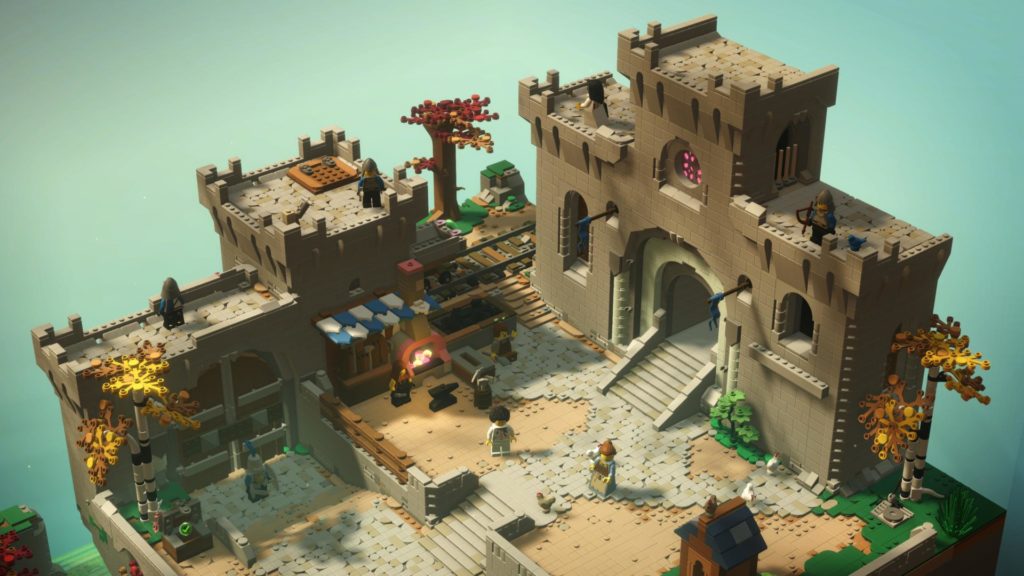
Despite those annoyances, LEGO Bricktales is the best LEGO game available today.
Should you play it? Yes
Why… Quite frankly, this is a LEGO game like no other. If you’re bored by the prospect of collecting studs this is the LEGO game you’ve been waiting for. LEGO Bricktales unlocks your creativity while challenging your understanding of physics and architecture at the same time. With so much potential tucked beneath the surface, a sequel or some DLC are highly desirable right now!
But… As hinted above, it often feels like a precursor to something greater. The inclusion of a barebones brick-building sandbox sim feels like a peek under the curtain, and with LEGO’s massive range of available bricks, it’s a shame it doesn’t feel fully fleshed out in LEGO Bricktales. With so many well-known LEGO themes, it’s also a shame to only be able to explore 5 of them.
Reviewed on Xbox Series X/S
Developer: ClockStone
Publisher: Thunderful
Playable on: Xbox Series X/S, Xbox One, PlayStation 4, PlayStation 5, Switch, PC
Released: 12th October, 2022




